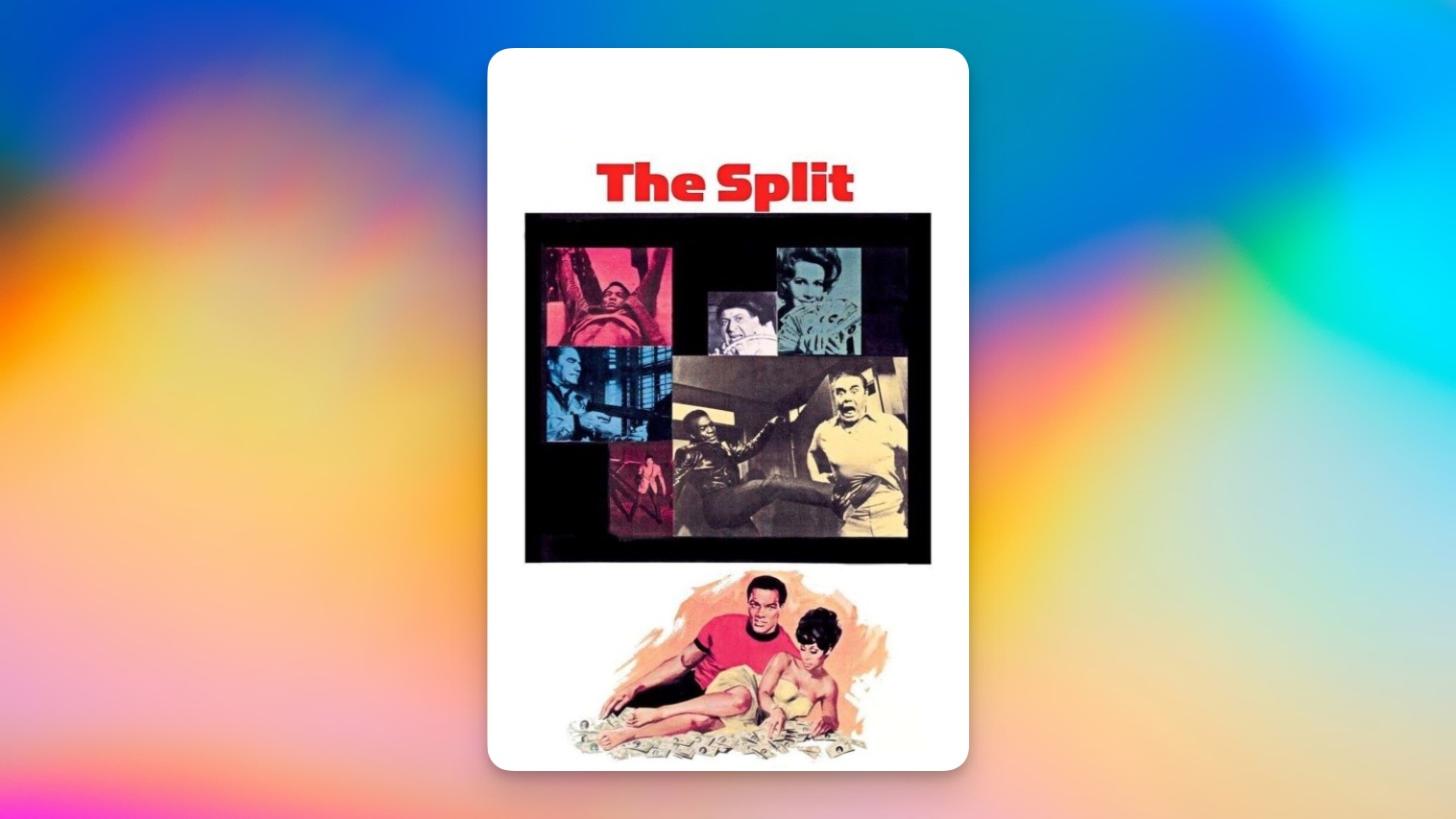The Split (1968) sits at an interesting crossroads of its era—part heist movie, part social commentary, part character study. Director Gordon Flemyng doesn’t try to break new ground so much as chip away at familiar territory. What makes The Split worth revisiting is the strength of its ensemble cast and the subtle, yet impactful, way it addresses the social dynamics of its time. As for the heist? Well, it’s fun. But you can certainly see why others in the genre had greater staying power.
Former NFL star Jim Brown takes the lead as McClain, a thief with a plan to rob the Los Angeles Memorial Coliseum during a playoff game. Brown’s performance is understated but magnetic. He doesn’t overplay the “cool criminal” archetype that so many heist films lean into. Instead, he brings a grounded, almost reluctant energy to McClain, which makes him more relatable than the typical heist ringleader. This is a man who is competent, yes, but also deeply aware of the risks he’s taking and the company he’s keeping. And he’s one of the former athlete class who can absolutely hold attention on screen.
The supporting cast is ridiculous. It reads like a who’s who of 1960s character actors: Ernest Borgnine, Gene Hackman, Donald Sutherland, Warren Oates, and Diane Carroll, among others. They make for a team dynamic that feels both unstable and flawed while deeply engaging, certainly punching above its class in this movie.
Made in 1968, the film doesn’t shy away from addressing race. Jim Brown’s McClain is a Black man in a predominantly white criminal world, and the tension that arises from that dynamic is palpable. Warren Oates’ character, Marty, is openly racist, and the film doesn’t sugarcoat the friction this causes within the group. But it’s not a movie that preaches. Instead, it lets these dynamics play out naturally, as part of the story’s fabric. The result is a film that feels authentic to its time while still being accessible to modern audiences and not lingering on the “don’t you know how hard it is to coexist?” angle that can date an otherwise fantastic film of the era.
This movie dies in the era of Venmo. The plan revolves around the all-cash economy of the late 1960s. Thousands of fans at a playoff game, all paying in cash, create a jackpot that’s ripe for the taking. The execution of the heist is refreshingly low-tech—no elaborate gadgets or computer hacking here. It’s all about timing, deception, and nerve. But what makes The Split unique is how little time it spends on the heist itself. The real tension comes afterward, as the group grapples with betrayal, greed, and mistrust when the stolen money goes missing.
This is where the film transforms from a heist movie into something closer to a psychological thriller. The title, The Split, takes on a double meaning—not just the splitting of the money, but the splintering of relationships. The paranoia that sets in among the team feels earned, and the film does an able job of keeping the audience guessing about who’s responsible.
Visually, the film is a snapshot of late–1960s Los Angeles. The cityscape, the Coliseum, and the interiors all reflect a time when the world was on the cusp of technological change but still firmly rooted in analog. Quincy Jones’ jazz-infused score adds to the atmosphere, giving the film a rhythm that mirrors the tension and release of the story.
If there’s a critique to be made, it’s that The Split doesn’t always feel cohesive. Some of the character interactions feel rushed, particularly during the team’s recruitment phase—a highlight for me. And while the film’s ending carries emotional weight, it also feels abrupt, leaving some threads unresolved. But maybe that’s the point. This isn’t a film about neat resolutions. It’s about chaos, distrust, and the messy human emotions that follow greed.
The Split may not be the most famous heist film of its time, but it’s one worth seeking out. It’s a movie that thrives on its performances and the tension it builds, rather than relying on flashy set pieces or gimmicks. At its core, it’s a story about people—flawed, desperate, and trying to survive in a world that doesn’t promise fairness. And in that sense, it feels as relevant today as I like to think it was in 1968.

